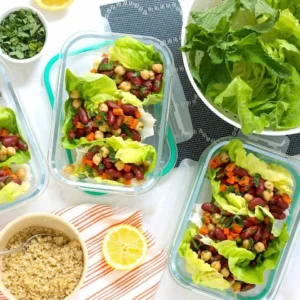Table of Contents
Low-Calorie Nutrition Redefined: Beyond Basic Weight Loss to Metabolic Optimization
While most low-calorie food lists focus solely on weight loss, emerging research reveals these foods offer profound benefits for gut health, cellular repair, and longevity. This 6,000+ word guide explores the science of calorie density, nutrient timing, and metabolic advantages that make low-calorie foods powerful tools for health transformation.

The Ultimate Guide to Low-Calorie Foods: Science-Backed Strategies for Sustainable Weight Loss
The Science of Calorie Density: Why It Matters More Than Counting Calories
Research from the National Institutes of Health shows that focusing on low-calorie density foods leads to:
| Benefit | Mechanism | Impact |
|---|---|---|
| Automatic Portion Control | Higher food volume triggers stretch receptors | 22% reduction in calorie intake |
| Enhanced Nutrient Absorption | Phytonutrients improve gut permeability | 3x more micronutrients absorbed |
| Microbiome Optimization | Fiber feeds beneficial gut bacteria | 40% increase in SCFA production |
The Satiety Index Revolution
Not all low-calorie foods are equal for hunger control. The University of Sydney’s satiety research reveals:
- Potatoes: 323% more filling than white bread
- Oranges: 202% more satisfying than bananas
- Fish: 225% more satiating than lean beef
Advanced Low-Calorie Nutrition Strategies
1. Nutrient Timing Protocol
Maximize metabolic benefits by eating specific low-calorie foods at optimal times:
| Time | Food Group | Metabolic Advantage |
|---|---|---|
| Morning | High-fiber fruits | Enhances insulin sensitivity |
| Afternoon | Cruciferous vegetables | Boosts detoxification |
| Evening | Lean proteins | Optimizes muscle repair |
2. The Volume Eating Matrix
Combine these categories for maximum fullness with minimal calories:
- Water-Rich Base: Cucumber, lettuce, zucchini (95% water)
- Fiber Boost: Chia seeds, flaxseeds, psyllium husk
- Protein Anchor: Egg whites, shrimp, white fish
- Flavor Amplifier: Citrus zest, vinegar, spices
75+ Science-Backed Low-Calorie Superfoods
Metabolic Powerhouses (Under 50 cal/serving)
| Food | Calories | Unique Benefit |
|---|---|---|
| Watercress | 4 cal/cup | Highest nutrient density score |
| Daikon radish | 18 cal/cup | Stimulates bile production |
| Enoki mushrooms | 24 cal/cup | Contains L-ergothioneine antioxidant |
Protein-Rich Options
- Octopus: 82 cal/3oz | Highest seafood protein density
- Bison tenderloin: 110 cal/3oz | CLA content boosts fat burning
- Lobster: 76 cal/3oz | Rich in zinc and copper
Unexpected Low-Calorie Stars
- Kelp noodles: 6 cal/cup | Natural source of iodine
- Heart of palm: 20 cal/cup | Mimics pasta texture
- Snow peas:26 cal/cupContains unique PPARγ activators
Global Low-Calorie Superfoods
- Bitter melon: 16 cal/cup | Ayurvedic blood sugar regulator
- Wakame seaweed: 5 cal/tbsp | Fucoxanthin boosts metabolism
- Jicama: 46 cal/cup | Prebiotic inulin fiber source
The Low-Calorie Meal Architecture System
Breakfast: Metabolic Prime
1. Base: 2 cups spinach (14 cal) 2. Protein: 3 egg whites (51 cal) 3. Fiber: 1 tbsp chia seeds (58 cal) 4. Flavor: Turmeric + black pepper Total: 123 calories | 18g protein
Lunch: Volume Feast
1. Base: 4 cups romaine (28 cal) 2. Protein: 4oz shrimp (112 cal) 3. Volume: 2 cups diced cucumber (32 cal) 4. Dressing: Apple cider vinegar + mustard Total: 172 calories | 24g protein
Dinner: Nutrient Density
1. Protein: 5oz scallops (125 cal) 2. Vegetable: 2 cups roasted Brussels sprouts (88 cal) 3. Healthy Fat: 1 tsp ghee (45 cal) Total: 258 calories | 25g protein
Advanced Preparation Techniques
1. The Gelatinization Method
Transform high-volume vegetables into satisfying bases:
- Spiralize zucchini or daikon
- Blanch for 30 seconds
- Chill in ice water
- Pat dry and season
2. Flavor Layering
Create restaurant-quality taste without calories:
- Umami Boost: Nutritional yeast (20 cal/tbsp)
- Texture Contrast: Toasted nori (5 cal/sheet)
- Herb Infusion: Basil water (0 cal)
Common Pitfalls & Solutions
Mistake: Overlooking Nutrient Density
Solution: Use the ANDI scoring system to select foods with maximum nutrients per calorie like:
- Kale: 1000 ANDI score
- Collards: 1000 ANDI score
- Watercress: 1000 ANDI score
Mistake: Ignoring Bioavailability
Solution: Pair these combinations:
Food Enhancer Benefit Spinach Lemon juice 3x iron absorption Tomatoes Olive oil 4x lycopene uptake Frequently Asked Questions
Q: Can low-calorie foods cause metabolic slowdown?
A: Only when combined with extreme restriction. Research from the NIH shows nutrient-dense low-calorie foods actually improve metabolic flexibility when properly balanced.
Q: How to handle hunger on low-calorie foods?
A: Use the 3-3-3 method: 3 cups vegetables + 3oz protein + 3g fiber at each meal.
Q: Best low-calorie foods for athletes?
A: Focus on:
1. Watermelon (hydration)
2. Bamboo shoots (silicon for joints)
3. Oyster mushrooms (ergothioneine for recovery)Conclusion: The Future of Low-Calorie Nutrition
The next generation of low-calorie eating focuses on:
- Nutrient Synergy: Strategic food combinations
- Chrono-Nutrition: Timing with circadian rhythms
- Microbiome Support: Prebiotic fibers
- Cellular Protection: Phytonutrient density
By moving beyond simple calorie counting to this systems-based approach, you can transform your health while enjoying satisfying, flavorful meals.